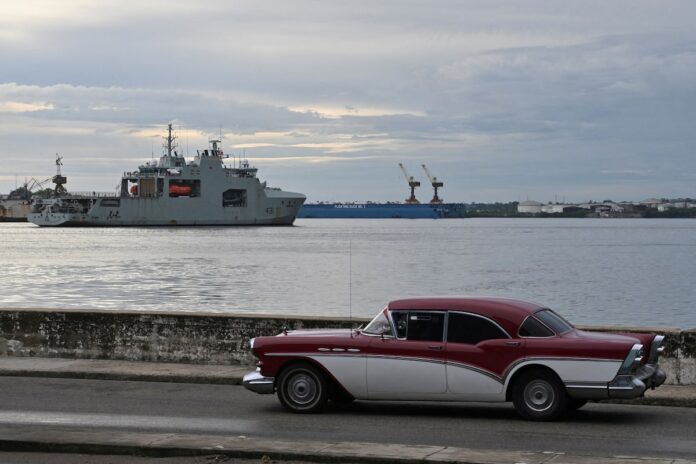“Canadian Warship’s Friendly Visit to Cuba Raises Questions”
Introduction:
A recent port visit by the Canadian warship HMCS Margaret Brooke in Cuba has sparked controversy and raised questions about the true intentions behind the friendly gesture. Photos of Royal Canadian Navy band members leading conga lines in downtown Havana have called into question Defence Minister Bill Blair’s explanation of the visit as a deterrent to Moscow. Let’s delve deeper into this issue and explore the different perspectives surrounding this diplomatic move.
The Controversial Port Visit:
The Canadian government has faced criticism for allowing a friendly three-day naval stop in Cuba, a country known to be a staunch ally of Russia. This visit came on the heels of American and Canadian warships tracking a Russian naval flotilla conducting military exercises in the Atlantic Ocean. In response to Putin’s warning of arming countries to target Western nations, Canada defended the port visit as a message to Moscow, emphasizing that “presence is deterrence.”
Musical Performances and Cultural Exchanges:
Photos shared by Canada’s embassy in Cuba show members of the Royal Canadian Navy entertaining crowds in Havana, including a conga line dance led by a band member. While Lt.-Cmdr. Linda Coleman stressed the military purpose of the visit, the cultural exchanges and musical performances have raised eyebrows regarding the true nature of Canada’s intentions in Cuba.
Ethical and Human Rights Concerns:
Critics, like Cuban-Canadian activist Michael Lima, have expressed disappointment over the friendly military visit in light of Cuba’s human rights record. With over 1,000 political prisoners, engaging in jovial activities like conga lines during a military visit sends conflicting messages. The 2021 anti-government protests in Cuba, met with brutal repression, highlight the challenges faced by the Cuban people and the complexities of international relations with the island nation.
Conclusion:
As Canada navigates its relationships with countries like Cuba and Russia, it must consider the ethical implications of its actions. Balancing diplomatic gestures with human rights concerns and geopolitical tensions is no easy task. The recent port visit to Cuba has shed light on the complexities of international diplomacy and the need for thoughtful and principled engagement. In a world marked by shifting alliances and power dynamics, Canada’s actions in Cuba serve as a reminder of the delicate dance of diplomacy in the modern era.”
Reference















